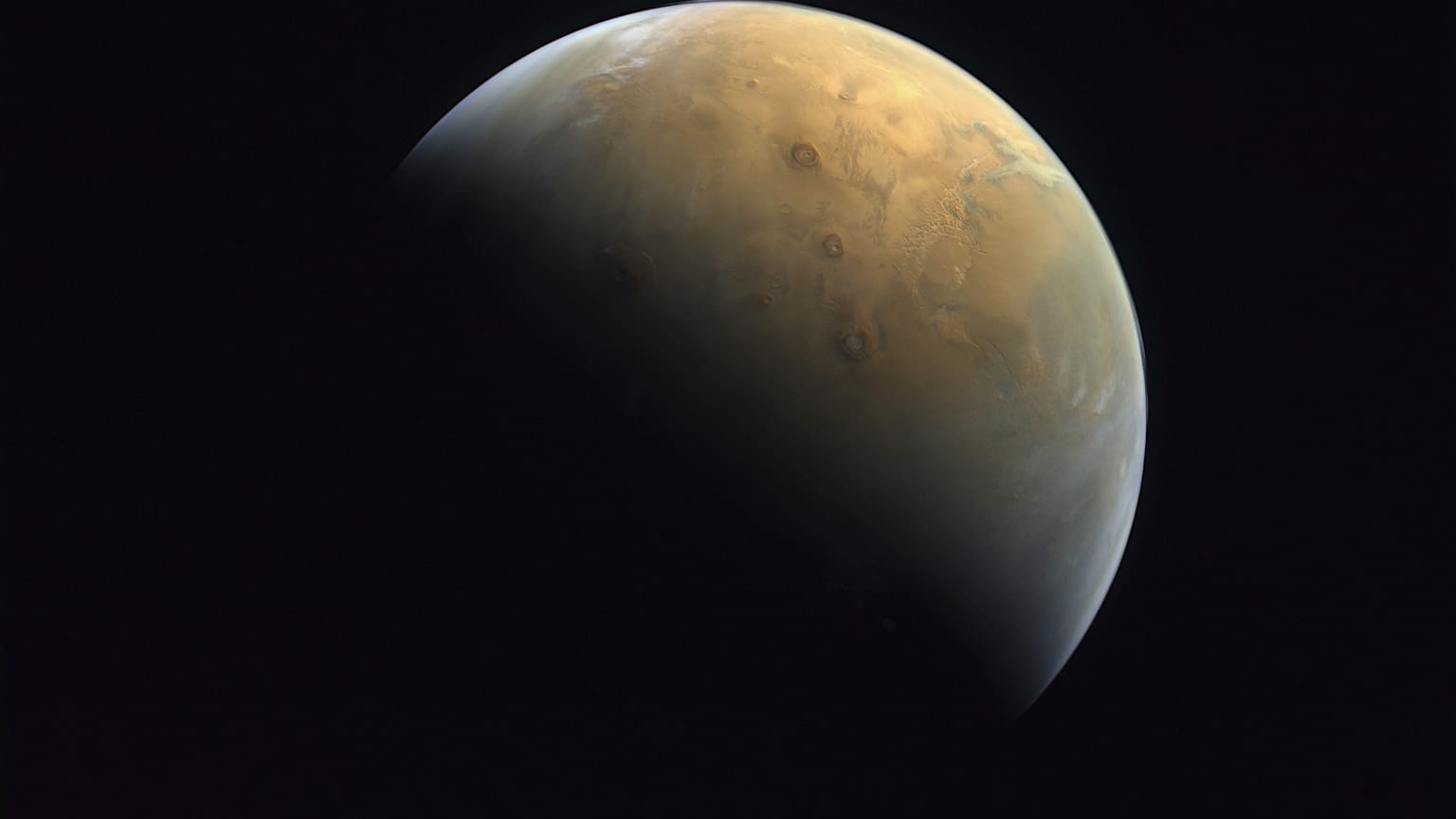Scientists from a number of missions orbiting the Red Planet studied their satellite data to try to determine the cause of the magnitude 4.7 quake.
A team of scientists believe they have worked out the source of the biggest ever seismic event recorded on Mars.
What was originally thought to be massive vibrations caused by a meteor impact, is now believed to be a “marsquake” caused by tectonic activity below the red planet’s surface.
NASA has its sights set on sending humans to colonise Mars one day - but there’s a lot about the planet we need to understand before that’s possible.
One of the key things is working out where the safe landing zones would be. Scientists working on the project say their results could help us to understand where it would be safe for humans to land - and live - and where to avoid.
The hunt for the source of the six-hour-long, magnitude 4.7 quake was launched after it was recorded by NASA’s InSight lander on May 4 2022.
According to Michigan Technological University, quakes on planet Earth between 2.5 to 5.4 in magnitude happen around half a million times a year, and are often felt by people but usually only cause at worst minor damage.
Researchers said its seismic signal was similar to previous quakes which were known to be caused by meteorite impacts, so the event - named S1222a - was believed to be caused by that.
In what is thought to be the first time all missions orbiting the Red Planet collaborated on a single project, an international hunt for the suspected impact crater was launched, to confirm the hypothesis.
The effort from teams at the European Space Agency (ESA), the Chinese National Space Agency (CNSA), the Indian Space Research Organisation (ISRO), and the United Arab Emirates Space Agency (UAESA), and the University of Oxford which led the study, found no evidence of a crater or signature of a meteor impact.
After several months of searching through their satellite data, the team concluded that the marsquake was caused by tectonic forces in the planet’s interior.
“We still think that Mars doesn’t have any active plate tectonics today, so this event was likely caused by the release of stress within Mars’ crust,” said study lead Dr Benjamin Fernando of the University of Oxford.
“These stresses are the result of billions of years of evolution; including the cooling and shrinking of different parts of the planet at different rates.”
He added that while researchers don’t fully understand why some areas have higher stresses than others, the information they are gathering “may help us to understand where it would be safe for humans to live on Mars and where you might want to avoid!”
Publishing their findings in the journal Geophysical Research Letters, the researchers say the evidence suggests Mars is much more seismically active than previously thought.
“This experiment shows how important it is to maintain a diverse set of instruments at Mars, and we are very glad to have played our part in completing the multi-instrumental and international approach of this study,” Dr Daniela Tirsch, Science Coordinator for the High Resolution Stereo Camera on board ESA’s Mars Express Spacecraft, said.
The S1222a marsquake was one of the last events recorded by InSight before its end of mission was declared in December 2022.


















